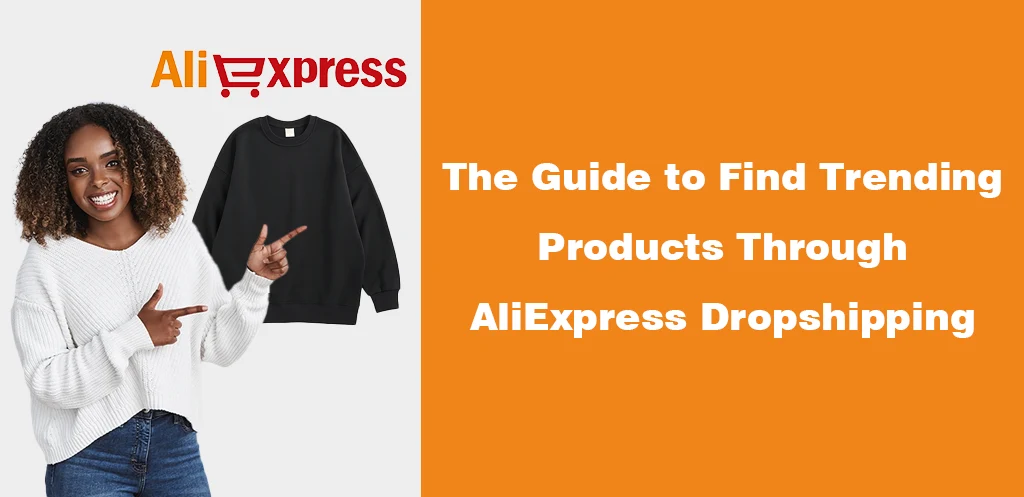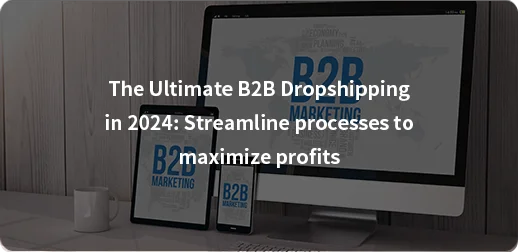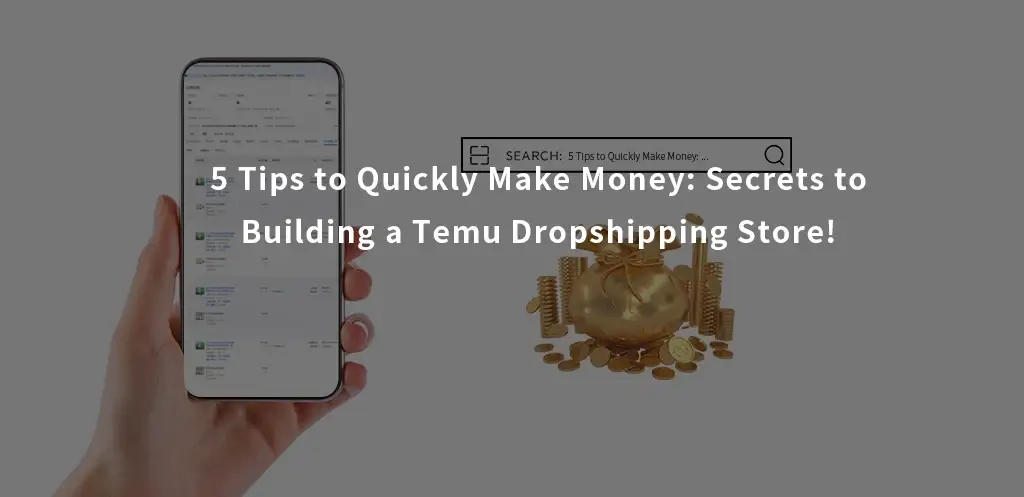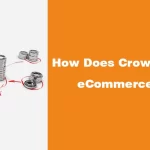With the fast development of the e-commerce, low- cost start-up is becoming popular among the young people nowadays. Dropshipping and print-on-demand are obvious models of low-cost entrepreneurship.
This article will discuss the differences between dropshipping and Print on demand and help you decide which is right for your business.
What Is Dropshipping?
Dropshipping is a business model that allows retailers to sell merchandise without holding inventory.
In this model, the retailer works with a supplier and sends the order directly to the supplier, who is responsible for shipping the merchandise directly to the customer.
The benefit of this model is that the retailer can invest a little money to buy inventory or deal with issues such as logistics and inventory management.
In addition, retailers can expand their product lines and increase sales by partnering with multiple suppliers.
However, some risks are associated with this model, such as suppliers needing to ship products promptly or providing low-quality products, which may affect the retailer’s reputation and customer satisfaction.
Therefore, retailers must choose suppliers carefully and establish good relationships to ensure smooth operations.
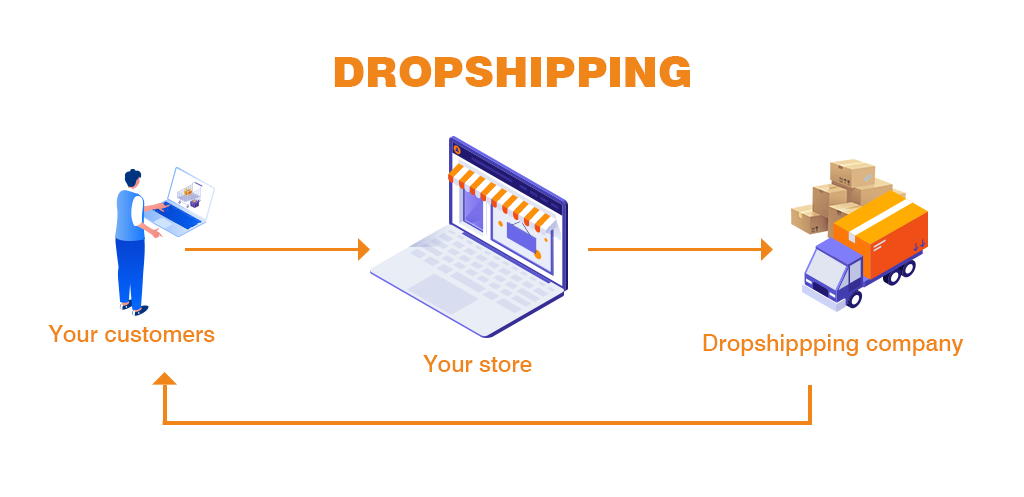
There are many websites where you can get connected with suppliers such as Globallyfulfill.
Globallyfulfill offers quality inspection. All products from the factory will be re-inspected to make sure they are of good quality. They also remove all factory tags and repackage the goods in beautiful packaging. All quality problems will be resolved in China before the product is shipped. Globallyfulfill takes your products seriously and strives to be the best in every detail.
What Is Print on Demand?
Print on Demand (or POD) is an order fulfillment process that prints items immediately after the order is placed, typically without minimum order requirements. It is a business model based on Dropshipping and is mainly customised with print companies. Print on demand is very similar to dropshipping in the sense that the product only starts to be produced after the customer has made an order. The most distinctive feature is that POD is low investment and lower risk, with no stock pressure. In addition, once you have started a POD business model, you will need to work with a printing company who will be responsible for everything after the sale, including the printing, piecework, packaging, shipping and other processes.
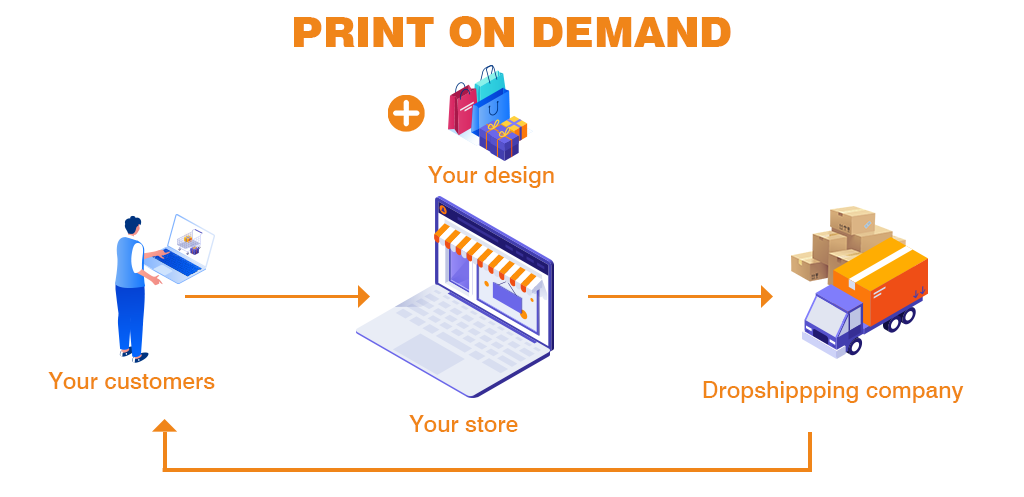
Dropshipping vs Print on Demand: What are the similarities?
Low Cost
Dropshipping and Print on demand are both low-cost e-commerce models.
Dropshipping does not require storage or management of inventory, so retailers only need to spend a little money on inventory.
Print on demand only produces products after customers place orders, so production costs are also low.
No Logistics Management Required
Both Dropshipping and Print on demand do not require retailers to manage logistics.
Dropshipping suppliers ship directly to customers, while Print on demand manufacturers send products directly to customers.
This allows retailers to focus on sales and marketing without worrying about logistics.
No Warehouse Required
Dropshipping and Print on demand do not require the retailer to have a warehouse.
Dropshipping suppliers ship directly to customers, while Print on demand manufacturers send products directly to customers.
This allows retailers to save on warehouse rent and maintenance costs.
No Production Required
Both Dropshipping and Print on demand do not require the retailer to produce the product.
This allows retailers to focus on sales and marketing without worrying about production.
Flexibility
Dropshipping and Print on demand are both very flexible.
Dropshipping suppliers can change products and prices anytime, while Print on demand manufacturers can produce different products according to customer demand.
This allows retailers to respond quickly to market demand.
Global Sales
Both Dropshipping and Print on demand can be sold globally.
The Dropshipping supplier can ship to customers all over the world, while the Print on demand manufacturer can send products all over the world.
This allows retailers to expand their market reach and increase sales.
What Are the Differences Between Dropshipping vs Print on Demand?
Dropshipping vs Print on demand are two popular business models recently gaining significant attention.
While both models involve selling products online, there are some critical differences between the two.
This article will explore the differences between dropshipping and Print on demand.
The first difference between dropshipping and print on demand is how products are produced and shipped.
In dropshipping, the seller does not hold any inventory. Instead, the seller lists products on their website, and when a customer places an order, the seller purchases the outcome from a third-party supplier who then ships the product directly.
On the other hand, Print on demand involves producing products only when an order is placed.
The seller designs the product and sends the design to a printing company, which then prints and ships the product directly to the customer. This means the seller cannot hold any inventory and can focus on designing and marketing their products.
The second difference between dropshipping and print on demand is the level of customization available.
In dropshipping, the seller is limited to the available products from their suppliers.
While some suppliers may offer customization options, these are often limited.
In contrast, Print on demand allows for a high level of customization. The seller can create their designs and offer a wide range of products, from t-shirts to phone cases, with their plans printed.
This allows the seller to create a unique brand and stand out from competitors.
The third difference between dropshipping and print on demand is the seller’s level of control over the product.
In dropshipping, the seller has little control over the product. They rely on their suppliers to produce and ship the product, which can lead to issues with quality control and shipping times.
In contrast, Print on demand gives the seller more control over the product. They can choose the printing company they work with and ensure the product meets their quality standards.
This can lead to higher customer satisfaction and repeat business.
The fourth difference between dropshipping and print on demand is the level of investment required.
Dropshipping requires little upfront investment as the seller does not need to hold any inventory.
However, the profit margins are often lower as the seller purchases products from a third-party supplier. Print on demand requires a higher upfront investment as the seller must create their designs and pay for printing and shipping costs.
However, the profit margins are often higher as the seller has more control over the product and can charge a premium for their unique designs.
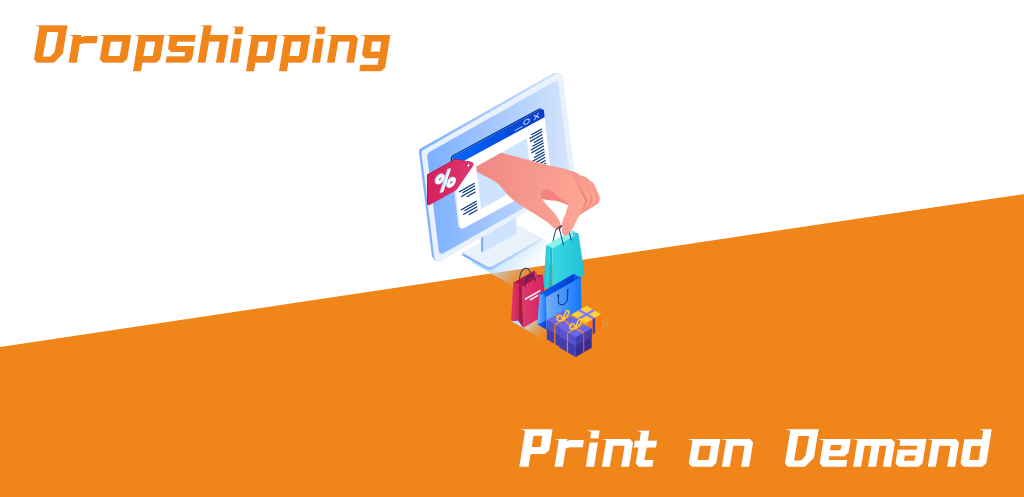
Drop Shipping vs Print on Demand – Which one is for you?
Each model has its pros and cons. Depending on your goals and abilities, you can choose the one that suits you better.
Printing on demand is the right option if you want to build your own brand.
Dropshipping is a great way to start if you want to make money faster.
Print on demand is the best fit if you are creative and good at designs and art.
Conclusion
Dropshipping vs Print on demand are two popular business models with unique advantages and disadvantages.
While dropshipping requires little upfront investment and a wide range of products, print on demand allows for high customization and control over the outcome.
Ultimately, the choice between the two models will depend on the seller’s goals and resources.
FAQs
1. What are the pros of Dropshipping vs Print on demand?
Print-on-demand and drop shipping are two popular methods for selling products online.
Print-on-demand allows for the creation of custom products, such as t-shirts or mugs, only when an order is placed.
This eliminates the need for inventory and reduces the risk of overstocking.
Drop shipping, on the other hand, involves outsourcing the fulfillment and shipping of products to a third-party supplier.
This allows for a wider range of products to be offered without the need for storage space.
Both methods have their pros and cons, but print-on-demand is ideal for those looking to offer unique, custom products, while drop shipping is better suited for those looking to offer a wider range of products without the need for inventory management.
2. What are the cons of Dropshipping vs Print on demand?
With print-on-demand, the main disadvantage is that the cost per unit is often higher than with traditional printing methods.
This can make it difficult to offer competitive pricing and may limit profit margins.
On the other hand, drop shipping can be challenging because it requires a lot of coordination between the seller and the supplier.
This can lead to delays and mistakes, which can negatively impact customer satisfaction.
Ultimately, it’s important to weigh the pros and cons of each method before deciding which one is right for your business.

